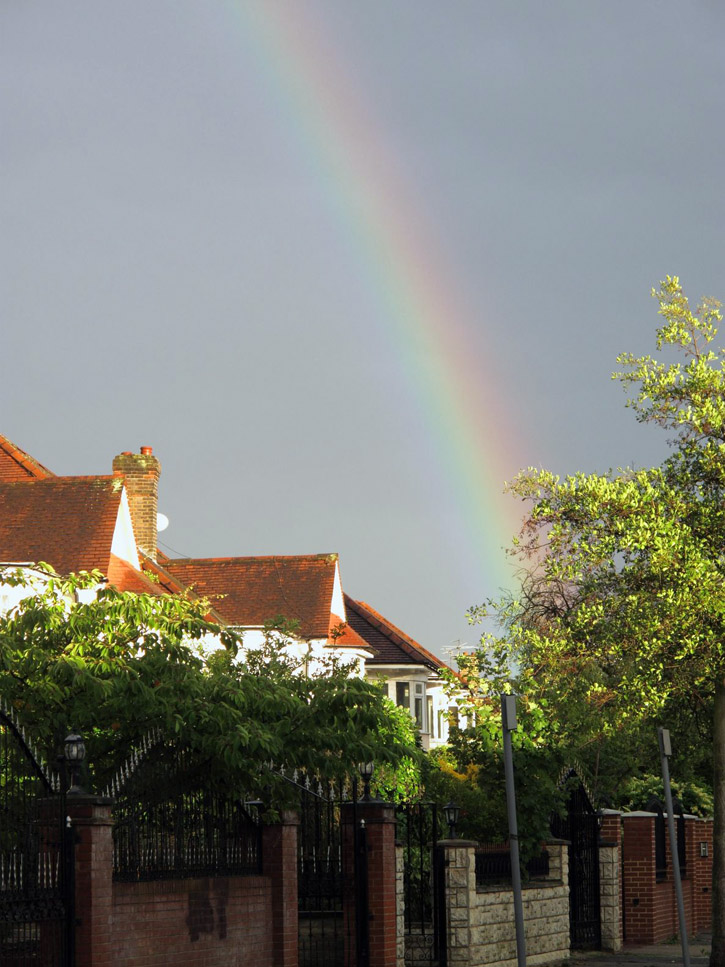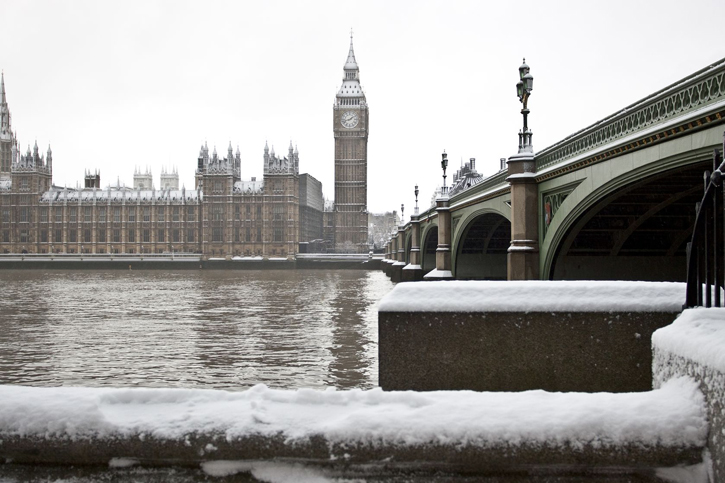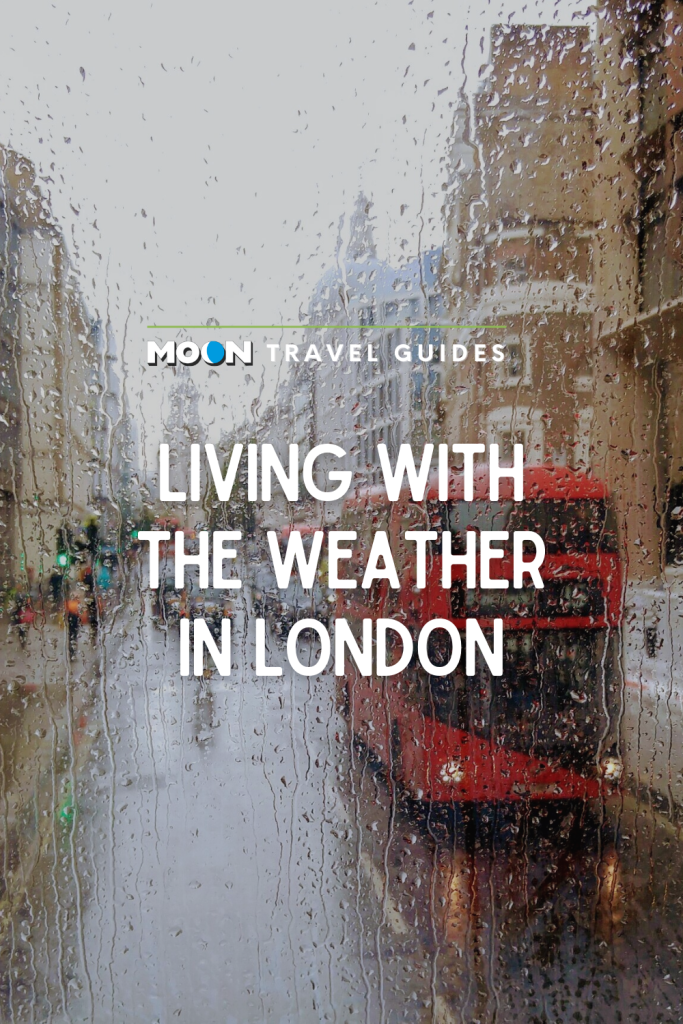Living with the Weather in London
One of the hardest things I found to get used to when I first moved to the United Kingdom was how London’s latitude—51°30’ North—affects the daylight. No sooner had the clocks gone back at the end of October than the days suddenly got much shorter, heralding the arrival of winter. By December I found I was leaving home and leaving work in the dark, as the sun didn’t rise until around 8am and set before 4pm… a bit depressing to say the least! Having come from sunny California, the lack of daylight soon got to me.

Likewise, the long days of summer also take some getting used to, as the sun starts to rise at around 4am (with the birds starting at around 3am!). It can be very hard to sleep when the sun is streaming into the bedroom at 5am, not to mention trying to get the children to bed (and asleep) when it is still sunny—in June the sun doesn’t set until around 9:20pm. Lovely as it is to have a sunny day, most of us still want and need our eight hours of sleep. To negate the effect of the early morning sun in the summer, many people in the United Kingdom rely on blackout curtains. This curtain lining is a godsend and will provide a bit of thermal insulation in the winter months in addition to keeping the sun out during the summer months.
Given that it is so far north, London and the British Isles are surprisingly temperate. We have the warm Gulf Stream to thank for our relatively mild weather, as it pulls warm water from the Caribbean up to Western Europe, making it warmer than it should be given its latitude. This means that London seldom experiences extreme cold in the winter or stifling heat in the summer. The average daytime temperature in January is around 8°C (46°F), with an average high in July of 22°C (73°F). There will of course be some summer days when the temperature climbs above 25°C (77°F) or even 30°C (86°F). Conversely, the temperature in the winter can plummet to around or even below freezing, but most homes have some form of heating to help keep you warm at night.
Newsletter Signup
By clicking ‘Sign Up,’ I acknowledge that I have read and agree to Hachette Book Group’s Privacy Policy and Terms of Use
One fact of London weather that you do need to prepare for is rain, which seems to happen throughout the year. Although the average rainfall isn’t actually that high (around 23 inches/58 centimeters a year), rain clouds do seem to descend on the city with great regularity—usually in the form of a drizzle. The easiest solution is to just have a small lightweight umbrella or shower-proof parka on hand. London gets an occasional thunderstorm when rain pours down, but for the most part the rain is fairly light.
Much to the annoyance of London’s children, snow is relatively unusual in the city. This is partly because the city generates so much heat from the buildings and cars that it rarely gets cold enough for it to snow (or at least for the snow to settle). Generally, London is several degrees warmer than the neighboring countryside beyond the city. As it is relatively uncommon, when it does snow in London the whole city can come to a standstill, creating misery and chaos. Both the Underground and the train services can be disrupted by freezing weather and snow. Despite what the name implies, London’s Underground is generally only underground in the middle of town. As the Tube lines head away from the center of town the trains go aboveground, making them susceptible to snow and ice.
Freezing weather and snow can also upset London’s train services, with ice on the rails likely to cause cancellations and delays. Yet it is the traffic that seems to suffer the most when snow falls. Just an inch of snow can cause major disruption to London’s traffic. This is made worse because so few people are accustomed to driving in snow and ice, and they misjudge the conditions, often with disastrous consequences.

A few years ago I drove to a mall in North London in late afternoon to pick up a gift. As I arrived the snow was just starting to come down, but not really settling. I quickly did my shopping in an attempt to get away before the rush hour, which was bound to be worse because of the snow. Of course I was too late and in just an hour around an inch or two fell. Now, for those of you used to snow in winter two inches is nothing, but in London it can cause major gridlock. That evening it took me more than two hours to get out of the shopping mall’s parking lot! The snow had come down too quickly and the local borough didn’t grit the roads with sand and salt in time. The whole situation was made worse because the entrance and exit to the mall were on a slight hill. Driver after driver failed to make it up the small incline in the snowy conditions. This, combined with drivers unaccustomed to maneuvering in the snow, meant that accidents and gridlock ensued as people fled the crowded mall. I later found out that some people never made it out of the mall that evening and were forced to spend the night there. So be warned; if it starts to snow London will come to a standstill until the snow thaws.
It is also worth pointing out that Britain’s usual weather pattern may be changing. Following more than a decade of extremely mild winters, the past couple of years have brought colder winter temperatures and wetter conditions to the United Kingdom. This increase in more extreme weather conditions may just be part of Northern Europe’s long-term weather cycles, or it may be a more worrying sign of climate change. If Britain is indeed experiencing climate change, then London will need to get more organized about dealing with the effects of wet or snowy weather.
At the other end of the scale, London seldom has sweltering summers. About the best we can hope for is a few days in the low 80s (F), when London becomes pleasantly warm and everyone heads to the parks to enjoy the summer sunshine. One thing to bear in mind is that London homes are not usually set up for long hot summers. You are unlikely to find (or need) a house with air-conditioning. I can remember just one unbearably hot summer in all of my 20 years or so of living in London—the summer of 2003. Otherwise we just have the odd spell of hot weather that usually lasts a week or two. For the most part London’s summers tend to be fairly damp affairs—as any Wimbledon tennis fan can tell you.
Uncover more adventures in Great Britain
Get inspired and get ready for adventure with the ultimate guide to Europe’s best trips!
Newsletter Signup
By clicking ‘Sign Up,’ I acknowledge that I have read and agree to Hachette Book Group’s Privacy Policy and Terms of Use
Pin It for Later



